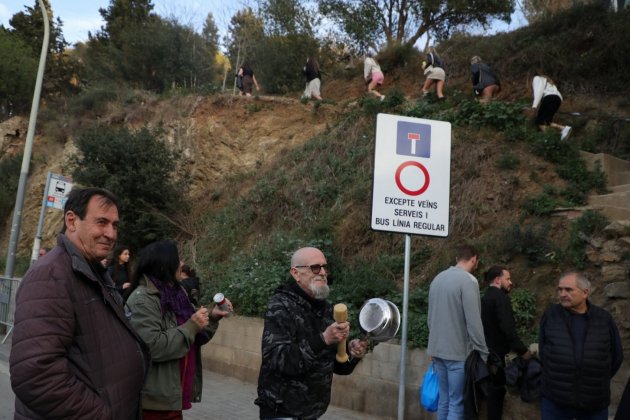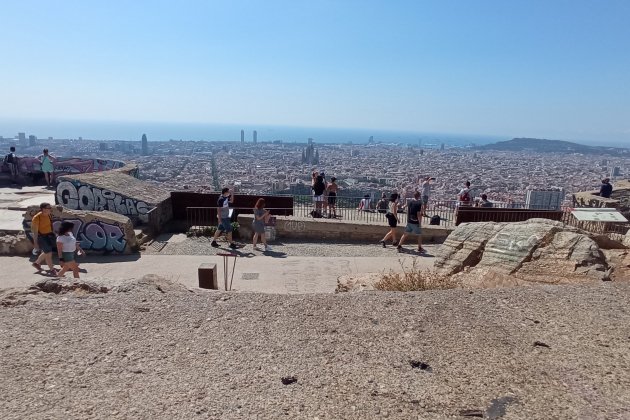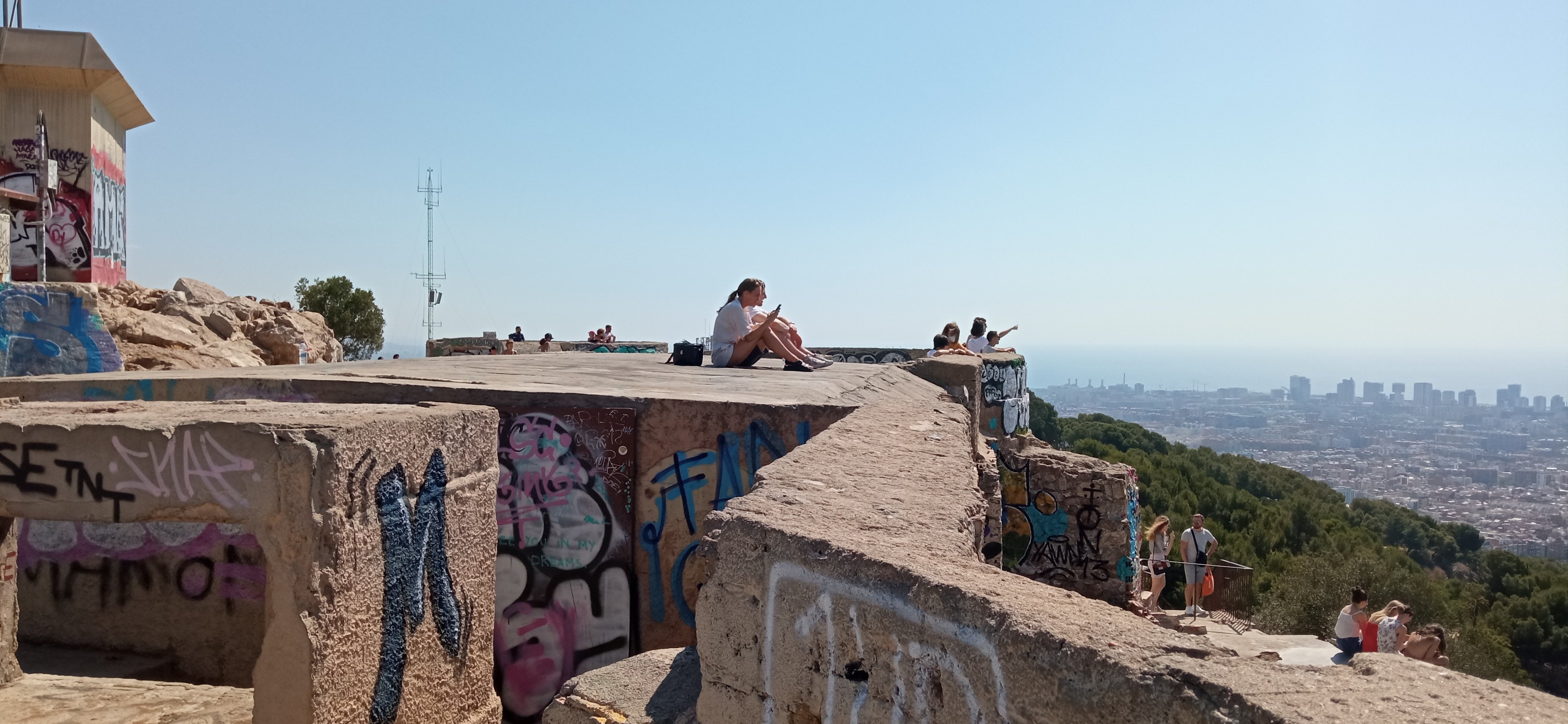The situation at the summit of the Turó de la Rovira in Barcelona has become explosive in recent weeks due to visitor overcrowding, with large numbers of people concentrated in a small space, with poor access and with residents nearby, who have to put up with it every day, and above all, every night: an excessive influx of people who want to enjoy a space that has its charm but has become the source of problems. The concept of a place being ruined by its own success applies perfectly to this location, one of Barcelona's most imposing viewpoints, as it offers a view that is both close to the city and offers a 360 degree panorama - but has now become a headache for the local residents, who have started to mobilize.

In fact, the residents have been protesting on the last two consecutive Fridays over the overcrowding in the area and the Barcelona city council, which is carrying out construction works to enclose the site, which will not be finished until May, decided to evict a thousand people gathered there last Sunday evening. And the thing is, this is a site that just a few years ago was a semi-unknown viewpoint where the views tended to be regarded as a complement to the really unique aspect, the archaeological remains from the Civil War gun emplacements or pillboxes, and the barraques - shanty housing - of the post-war period. And yet now it has become an extremely popular and free tourist attraction, where despite the absence of basic services, clandestine parties are even organized with DJs and bars.
The starting point for all of this has been the tourist promotion that has been made of the space over the last decade, which has turned the top of Turó de la Rovira into a synonym for free parties which run until the wee small hours, almost a mandatory pilgrimage site for visitors who come to Barcelona for a party experience. Social media - tiktok, instagram, even Twitter - are full of posts that promise (or celebrate) an unforgettable day as the sun goes down and, if desired, a perfect sunrise. And all at a low price, in fact, for free, with the municipal government having failed to find a solution and residents on the verge of meltdown.
But what is this place really called?
The reader will have noticed that until now we have referred to this space as the summit of Turó de la Rovira, a turó being a "hill", but the fact is that it is known by two names, that of the bateries (gun emplacements or pillboxes) of Turó de la Rovira and that of the Carmel bunkers. Which is correct? Of course, the one that most closely matches the reality of the place is that of the pillboxes of Turó de la Rovira, but the second is the version that has become popular, even though it starts from two falsehoods: there are no bunkers, nor are they in Carmel, at least, they're not on the hill of that name.
Thus, in fact the hill we're talking about is La Rovira, a neighbour of the Carmel hill and perfectly distinguishable because the first one has buildings on top and the second one doesn't. The real Turò del Carmel is a little higher, but La Rovira has more history, going right back to when it was part of the network of Iberian towns in pre-Roman times that linked the coastal hills from Montjuïc to the Maresme. But the explanation of the most current name goes back to the Civil War. Anti-aircraft gun emplacements were set up in this place to defend the city against the air attacks from the fascist Italian air force, who were allied with Franco's forces and were based on Mallorca.

The history of the artillery emplacements was not particularly heroic, and militarily they were not very useful, but they left behind a series of installations - the bases of the guns, the dorm rooms, the powder room, the command centre - which not only remained there but were then reused by the barraca builders, immigrants who constructed their own shanty homes as best they could in the Canons neighborhood, which was still inhabited until Barcelona's great Olympic transformation began. For all that, the space has been turned into a museum - yes, cultural visits can be made there - and it is currently one of the sub-sites of the Barcelona History Museum (MUHBA), which has exhibition spaces focusing on the pillboxes, the Civil War and the shanty town that came later. The official name of the space is MUHBA Turó de la Rovira, and all the information refers to the anti-aircraft guns that were installed there.
As for the popularized name, the Carmel bunkers, it could be argued that the structures are located in the neighbourhood of that name, even though it borders Can Baró, but the concept of bunkers, when you look it up in the dictionary - in either English or Catalan - does not seems applicable in this space. A bunker is a "shelter, usually made of reinforced concrete, to protect against bombardments". Sure, the presence of the structures on the hilltop to accommodate the troops and officers, and the wide parapets of the artillery emplacements could lead to confusion, but the buildings were not intended to provide protection from bombing, but rather, almost the opposite, to combat the bomb raids.
All in all, the most accurate name gfor the installations in Catalan - la bateria antiaèria - is also appropriate when translated to English - the gun emplacements or pillboxes. And of course the location is Turó de la Rovira. However, look at what happens in other situations - the example of El Born, which has almost superceded the other name for the same district, La Ribera. That is, when a name becomes popular, even if it's just plain wrong, it is always difficult to fight against. The title of the Carmel bunkers, despite its inherent incorrectness, has already won the name game in the tourist field, one which is not especially distinguished by its linguistic rigour. It would be difficult to straighten that out, although it would perhaps be a first step towards tourism degrowth.

